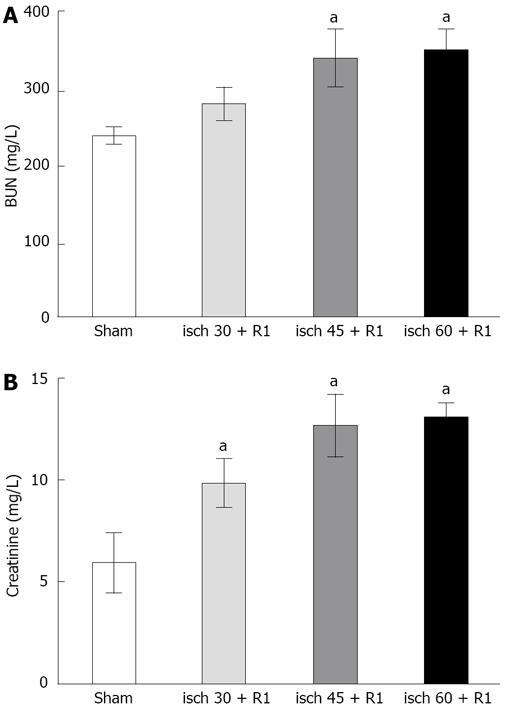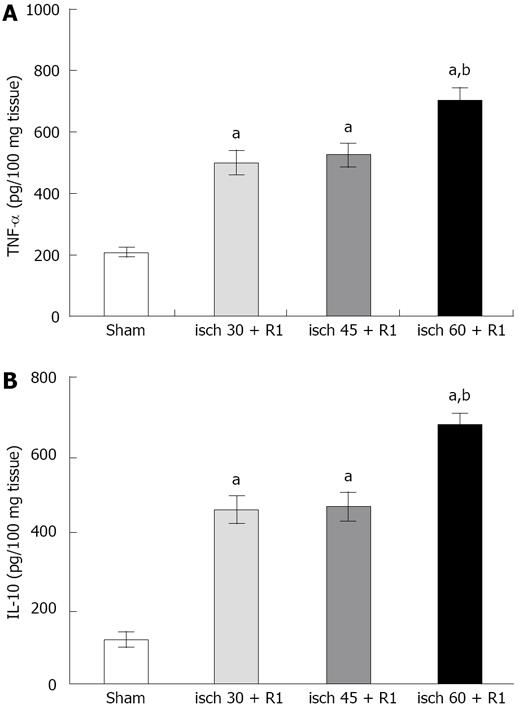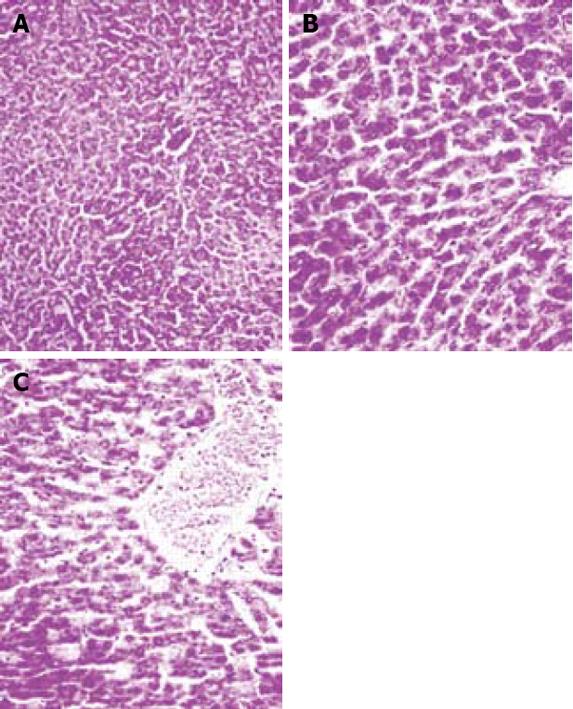Copyright
©2009 The WJG Press and Baishideng.
World J Gastroenterol. Mar 7, 2009; 15(9): 1113-1118
Published online Mar 7, 2009. doi: 10.3748/wjg.15.1113
Published online Mar 7, 2009. doi: 10.3748/wjg.15.1113
Figure 1 Alterations in renal function during different renal I/R periods.
A: BUN; B: Plasma creatinine. The data are presented as mean ± SE. aP < 0.05 vs sham-operated group. All ischemic periods were followed by 1 h reperfusion.
Figure 2 Alterations in liver GSH (A) and FRAP (B) during different renal I/R periods.
The data are presented as mean ± SE. aP < 0.05 vs sham-operated group; bP < 0.05 vs 30-min ischemia group. All ischemic periods were followed by 1 h reperfusion.
Figure 3 Alterations in liver TNF-α (A) and IL-10 (B) during different renal I/R periods.
The data are presented as mean ± SE. aP < 0.05 vs sham-operated group; bP < 0.05 vs other groups. All ischemic periods were followed by 1 h reperfusion.
Figure 4 Hematoxylin and eosin-stained sections of rat liver.
A: Sham-operated group. B: I/R group, vacuolization was frequent in the 45 min ischemia-reperfused tissues. Irregularity, pale (atypical) nuclei, disintegrated cytoplasm, and infiltration of leukocytes were seen. C: Similar changes were observed in the 60 min ischemia-reperfused group (× 400).
Figure 5 Alterations in liver SSAT and CARF expression during 60 min renal ischemia followed by 1 h reperfusion.
A: SSAT mRNA levels in the liver of renal ischemic samples were 139 ± 7% vs the sham-operated group, after adjustment for RNA loading as determined by 18S rRNA. P < 0.05 vs sham-operated group. B: CARF mRNA levels in the liver of renal ischemic samples were 98% ± 8% of levels in sham-operated group, after adjustment for RNA loading as determined by 18S rRNA.
- Citation: Kadkhodaee M, Golab F, Zahmatkesh M, Ghaznavi R, Hedayati M, Arab HA, Ostad SN, Soleimani M. Effects of different periods of renal ischemia on liver as a remote organ. World J Gastroenterol 2009; 15(9): 1113-1118
- URL: https://www.wjgnet.com/1007-9327/full/v15/i9/1113.htm
- DOI: https://dx.doi.org/10.3748/wjg.15.1113













